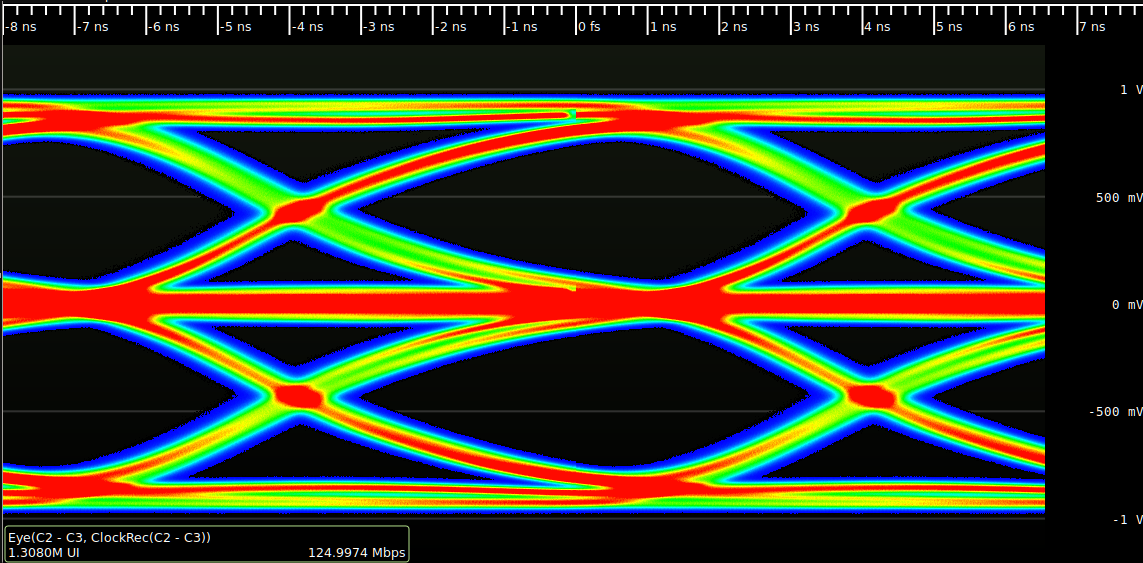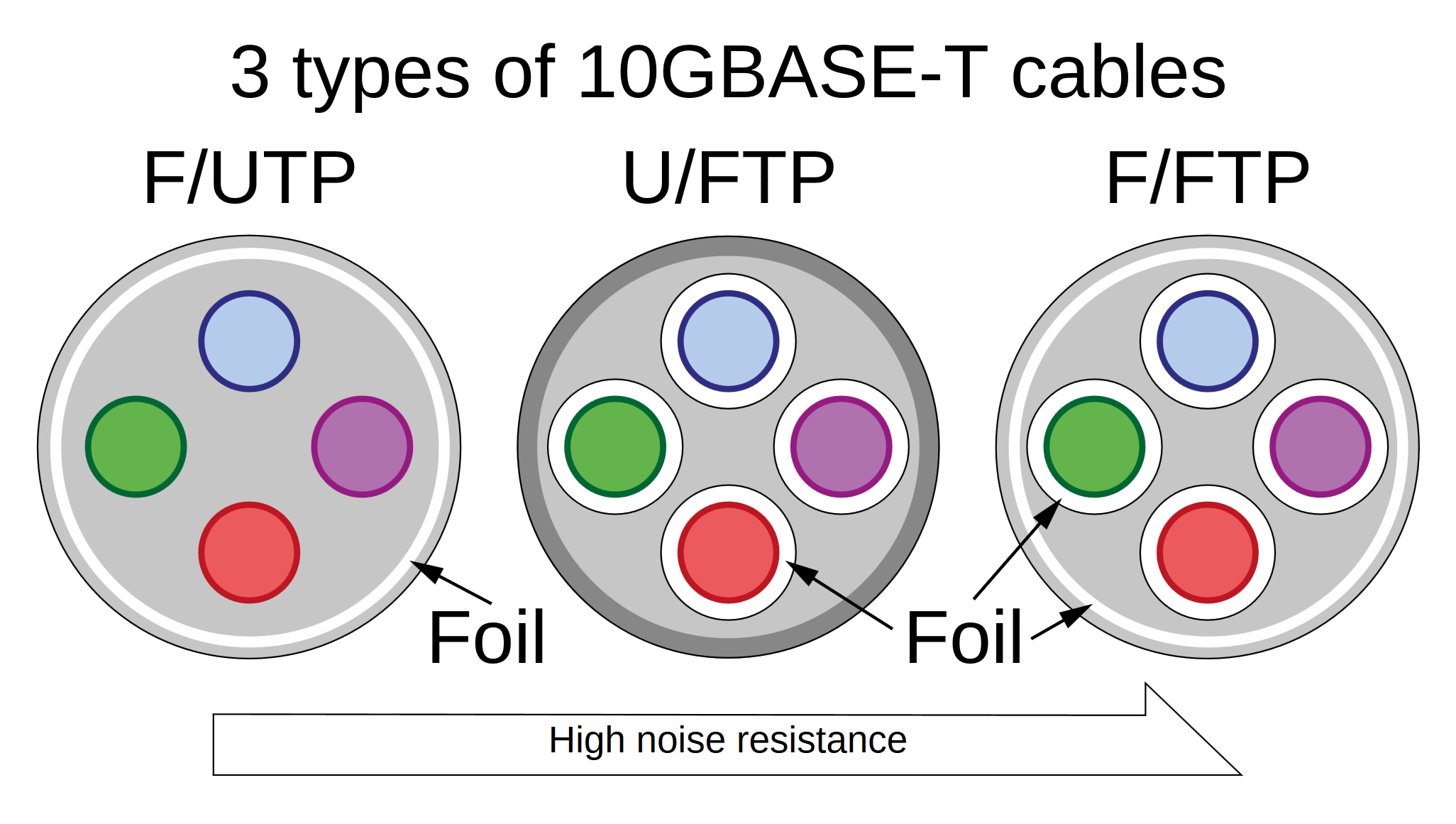All About Cats, and What Ethernet Classifications Mean Beyond ‘Bigger Number Better’ [Hackaday]

Although it probably feels like forever to many of us since Category 5 Ethernet cabling became prevalent, now that 2.5 and even 5 Gbit Ethernet has trickled into the mainstream, a pertinent question that many probably end up asking, is when you should replace Cat-5e wiring with Cat-6, or even Cat-7. Since most of us are likely to use copper network wiring for the foreseeable future in our domiciles and offices, it is a good question that deserves a good answer. Although swapping a Cat-5e patch cable with a Cat-7 one between a network port and computer is easy enough, replacing all the network cable already pulled through the conduits of a ‘future-proofed’ home is not.
The good news is probably that Category 8 Class II (Cat-8.2) is all you need to run your 40 Gbit Ethernet network with standard twisted pair wiring. The bad news is that you’re limited to runs of only thirty meters before signal degradation begins to kick in. If you take things down a notch to Cat-6A or Cat-7 (ISO/IEC 11801 Class EA and F, respectively), you can do 100 meter runs at 10 Gbit/s just like 100 meters runs at 1 Gbit/s were possible with Cat-5e before. Yet what differentiates these categories exactly?
Spectral Bandwidth

The primary measurement that underlies these differences is called the spectral bandwidth, and is defined in Hertz. The bandwidth for twisted pair Ethernet wiring is in the MHz range, with Cat-5(e) hitting 100 MHz, Cat-6 250 MHz and Cat-6A 500 MHz. What this effectively means is the number of times that the signal can change per second before the receiver no longer is capable of receiving the entire session, at which point data loss will occur.
Much of the improvement in speeds over the same copper wiring is due to improved encoding schemes (also known as the line code), which are also responsible for boosting dial-up internet from a few baud to a few kilobytes per second. Here an essential factor is also the overhead of the encoding scheme, such as the old-school Manchester encoding used with 10BASE-T Ethernet. For its rated 10 Mbit you need at least 10 MHz spectral bandwidth to keep up, which worked fine even on Category 3 unshielded twisted pair (UTP) wiring, as is still commonly used for telephone wiring.

Here the encoded signal uses 2-level encoding (binary 0 or 1), but it’s also possible to use more levels for the encoded signal, such as the 4-bit-5-bit (4B5B) encoding of 100BASE-TX (Fast Ethernet), which encodes 4 bits of data in 5 bits, which would normally require 125 MHz of bandwidth to transfer, but the final encoding step of 100BASE-TX is MLT-3 (Multi-Level Transmit), which as the name suggests cycles between three voltage levels (+1, 0, -1 V). Due to the use of MLT-3, to reach the effective data rate of 100 Mbit/s only a bandwidth of 31.25 MHz is required rather than 125 MHz.
Interestingly, 100BASE-T1 uses a three-level PAM-3 (Pulse-Amplitude Modulation) encoding, which makes it more practical for automotive and other embedded applications, but limits this version to a mere 15 meters on the same Cat-5e. For Gigabit Ethernet (1000BASE) the 1000BASE-T1 variant is similar in that it uses PAM-3 for the encoding, but requires (500 MHz capable) Cat-6A cabling due to its 375 MHz bandwidth requirements.
The more pedestrian 1000BASE-T uses 4-dimensional Trellis Coded Modulation (TCM 4D) and PAM-5 on all 4 wiring pairs in Cat-5, demanding a mere 62.5 MHz from the 100 MHz that Cat-5 is required to handle. Although a 1000BASE-TX standard was proposed in 2001 to replace the 1999 1000BASE-T standard that would use only PAM-5 on Cat-6 wiring, this was a failure in the market as the 1999 standard more than met the market’s demand.
Yet now that 2.5 Gbit Ethernet and beyond seem to have truly arrived, it ought to be clear that Cat-5 and the tweaked Cat-5e standards are now rapidly gaining legacy status, and should not be considered for new purchases and installations. Even though 2.5GBASE-T (using 64B66B, PAM-16 and DSQ128) can technically use 100 MHz Cat-5e wiring courtesy of its 100 MHz bandwidth requirement, this assumes flawless wiring. Putting in 500 MHz-capable Cat-6A would give much more leeway (up to 400 MHz-requiring 10GBASE-T), with a healthy tolerance in the case of degraded cables.
Twists And Turns

With the basics of spectral bandwidth out of the way, a pertinent question that may have floated to the surface of one’s mind by this point is where the twists in ‘Ethernet cables’ (twisted pair cabling) are relevant. Perhaps more specifically: where does the extra spectral bandwidth in those different categories of networking cables come from?
The basic answer is that it is affected by the used conductor material (e.g. copper) and the amount of interference (EMI and crosstalk) which limit the effective range and bandwidth of the signal. For Category 6 and up this means that only copper (not e.g. copper-clad aluminium (CCA) ) is an acceptable conductor, leaving the remainder of the research focus on reducing the impact of external interference. The first line of defense here is found in the presence of the signal pairs, each of which form a balanced signal pair that enables significant amounts of noise to be rejected.
By also twisting these two conductors within a balanced pair around each other, the amount of electromagnetic noise they’re exposed to is reduced, while also reducing the amount of noise these twisted pairs expose nearby pairs to, effectively limiting the amount of crosstalk. The more twists per length of cable, the more significant this effect is. The relevant standards do not specify a specific number of twists (pitch) per length of cable, just that the cable can perform at the parameters required by the targeted standard.
In order to further increase noise rejection, the cable can be further shielded in a variety of ways, either with foil around the individual pairs (U/FTP), around all the pairs (F/UTP), or both (F/FTP). A network cable can be marked and sold as Category 6A if it passes a 500 MHz bandwidth and crosstalk test, for the latter measuring crucial parameters such as Near End crosstalk (NEXT, near the transmitter) and Far End crosstalk (FEXT, near the receiver). With Category 6+ wiring alien crosstalk (AXT) from neighboring cables becomes more crucial as well.
Squeezing Copper
Category 7, 7A and 8 cables use even stricter noise shielding than Cat-6A in order to bump the spectral bandwidth up to 600 MHz for Cat-7, 1 GHz for Cat-7A and a pretty amazing 2 GHz for Cat-8. As noted earlier, Cat-8 is what’s required to run networks at 25GBASE-T and 40GBASE-T speeds, albeit over fairly short distances (~30 meters). In general use you will find Cat-6(A), as well as Cat-7(A), with the latter being mostly advertised for fixed installation (using the solid core version), though you could argue that between a theoretical 500 and 600 MHz it’s somewhat of a toss-up, especially when taking into account factors like the quality of installation, such as the untwisting of pairs when punching them into a terminal block.
With either Cat-6A or Cat-7(A) run through the conduits of the new office or one’s dream house, it would seem likely that this is as far as copper will be pushed for now. As anyone who has recently browsed at their local IT networking store for 5 and 10 GBit cards and switches can probably attest to, at these extreme points of twisted pair networking the cost picture between a copper- and fiber-based network begin to somewhat blur together.
For equipment that supports SFP modules, it’s even possible to switch its interfaces between copper-based twisted pair and fiber-optic versions, which at least saves the trouble of replacing the entire device if upgrading the network to fiber. It’s quite possible that by the time that 10GBASE-T begins to feel as old and grizzled as 1000BASE-T today, fiber-optics may be the new mainstream standard. This would have the advantage of fiber-optics being immune to factors like EMI and crosstalk, while providing the potential for 100+ GBit home networks.
Until that time, it’s best to ensure you get your twisted pair cables from reputable brands, as anyone can put some lettering on a cable, yet not many have the test equipment lying around to validate that a ‘Cat-6A’ cable isn’t secretly a barely-Cat-5-cable with CCA conductors. Just so that you don’t wonder later why your ‘2.5 GBit network’ actually runs at closer to Fast Ethernet speeds.

![all-about-cats,-and-what-ethernet-classifications-mean-beyond-‘bigger-number-better’-[hackaday]](https://i0.wp.com/upmytech.com/wp-content/uploads/2023/11/151477-all-about-cats-and-what-ethernet-classifications-mean-beyond-bigger-number-better-hackaday-scaled.jpg?resize=800%2C445&ssl=1)